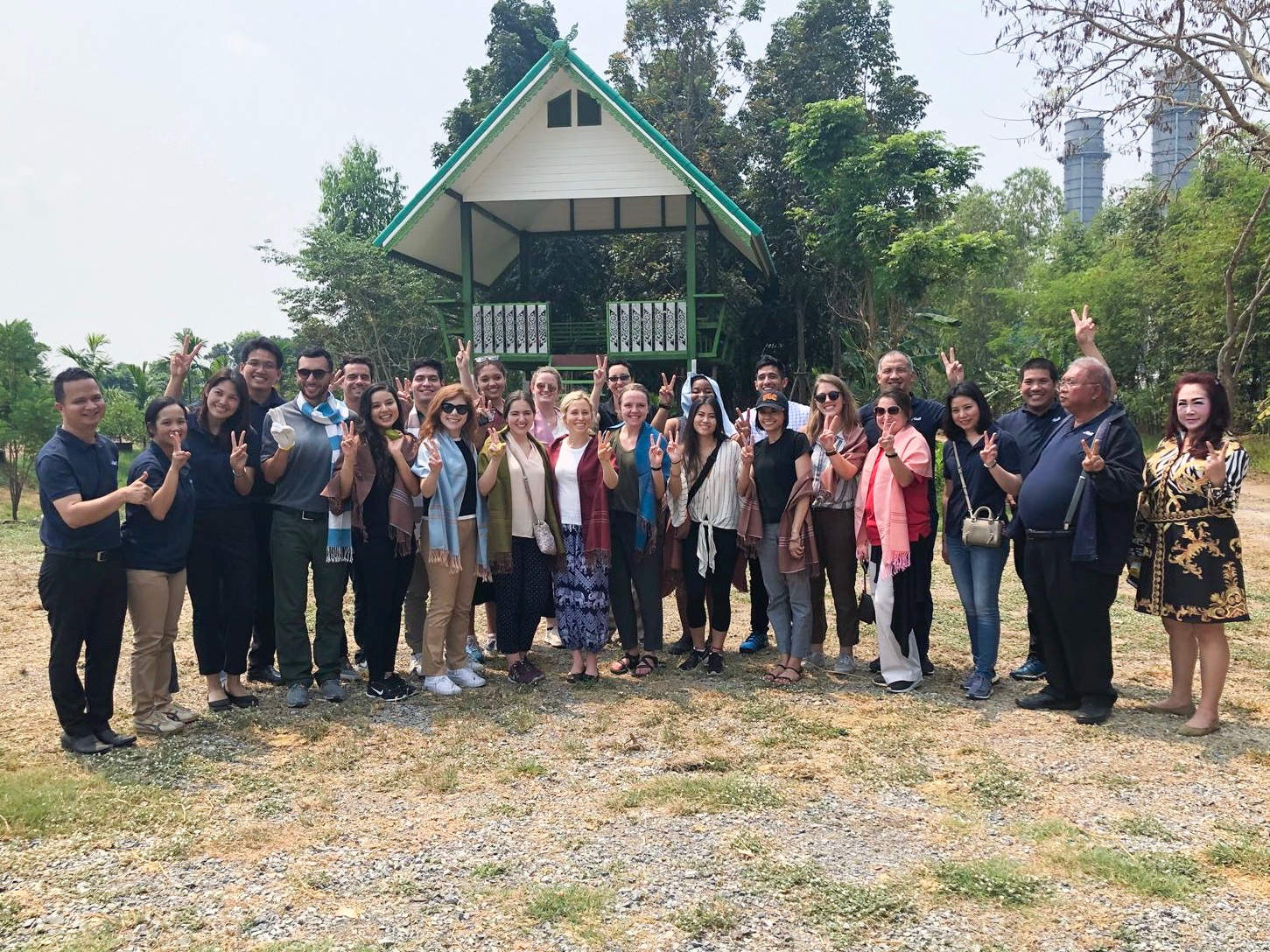In 2013, I arrived in Bangkok for a six-month language exchange. Stepping out into the stifling heat, throngs of people and blaring sounds of Bangkok traffic served as a concrete reminder that I was more than 8,000 miles away from home. This chaotic sensory experience gradually morphed into a familiar sensation as I spent the next six months making new friends and immersing myself in Thai culture.
Six years later, I find myself back in Bangkok. My eyes scan the horizon for familiar sights when I notice something new, construction on four new subway lines. Providing safe, reliable, and modern public transport in a city of ten million and growing highlight steps taken to alleviate the fact that at 61 hours, Thailand leads the world with highest average hours spent in traffic. Moreover, new subway lines are aimed at targeting the heavy pollution that forced Bangkok schools to shut down for a week this January.
As the van exits the highway onto bustling Sukhumvit road, my eyes are drawn to the bright political banners that dot the streets. The banners advertise candidates for the upcoming political election, the first in eight years. I am reminded of the last months of my exchange when tensions between red shirts, rural supporters of former Prime Minister Thaksin, and yellow shirts, urban royalists, boiled over and manifested into protests that shut down whole swaths of Bangkok. This schism highlights the unequal distribution of resources and power in Thailand; rural communities lack quality education and professional opportunities with the overwhelming majority of these opportunities centered in Bangkok.
On my third day in Thailand, I wait for the river taxi along the banks of the Chao Phraya river. Long before the BTS and MRT, Bangkok’s modern Skytrain and subway, residents commuted along the Chao Phraya and the various canals that branch off it. This harmonious coexistence with the Chao Phraya and its canals gave Bangkok the nickname “the Venice of the East”. I experience this coexistence first hand when I see traditional Thai homes alongside the river. Their open layout allows for constant circulation of cool river breezes while the slanted roofs and stilts that support each home account for torrential downpours and floods during the rainy season.
As I travel further up the river, I see ICONSIAM a luxury shopping mall and residential complex. The bright white and modern architecture contrasts vastly to the deep wooden hues of the traditional homes further down the river. ICONSIAM represents two sides to Thailand’s economic development. On one hand, it represents the fact that from 1986 to 2016, the percentage of people living below the poverty line decreased from 67% to 8.6%. On the other hand, the complex represents the fact that in 2018 the top 1% of Thailand controls more than two-thirds of national wealth.
Stepping off the river taxi onto Pinklao pier, I make my way back to my former apartment. Walking along the narrow sidewalk, I see the husband and wife pounding the ingredients to make som tam, a fiery green papaya salad. Their familiar faces greet me as I recall them sharing stories of their family in Isaan, the Northeastern region of Thailand. They serve as a living representation of the 1.1 million Khon Isaan, Northeastern Thais, that migrated to Bangkok, and other urban areas, from 1980 to 1990. This migration raised incomes for migrant-sending households by over 17% and also allowed for continued investment in rural development projects.
I retrace my former commute to school as I cross Pin Klao bridge, the mid-day sun beating against my face. I reflect on my trip back to Bangkok. Urban landscapes and the political stage have certainly changed in the six years that I have been away. Traffic jams, air pollution, and a growing social divide are met with decreasing levels of poverty, an emphasis on public transportation, and a general improvement of living standards. Thailand, like many other countries around the world, is experiencing the positive and negative effects of urbanization and industrialization. I value this first-hand experience as a public diplomacy student as I better understand how urbanization and industrialization manifest themselves in an increasingly globalized and interconnected world.
As I finish crossing Pin Klao bridge, I reflect on the personal changes I have experienced since leaving Bangkok. I attended an exchange program to Rio de Janeiro, graduated from UC Santa Barbara, taught English in São Paulo, worked in New York City, and started a masters program at USC. These changes were difficult and oftentimes uncomfortable, but my time in Thailand motivated me to embrace the uncertainties in each place as integral and beneficial components to my life journey.
Living through the lessons and experiences I learned in Thailand reminds me that no matter where I may find myself, I always carry a piece of Thailand with me.
Timothy Yeh
Tim is pursuing his masters in Public Diplomacy and will graduate in May 2020. He is passionate about international exchanges, foreign languages, and cultural exchange.








